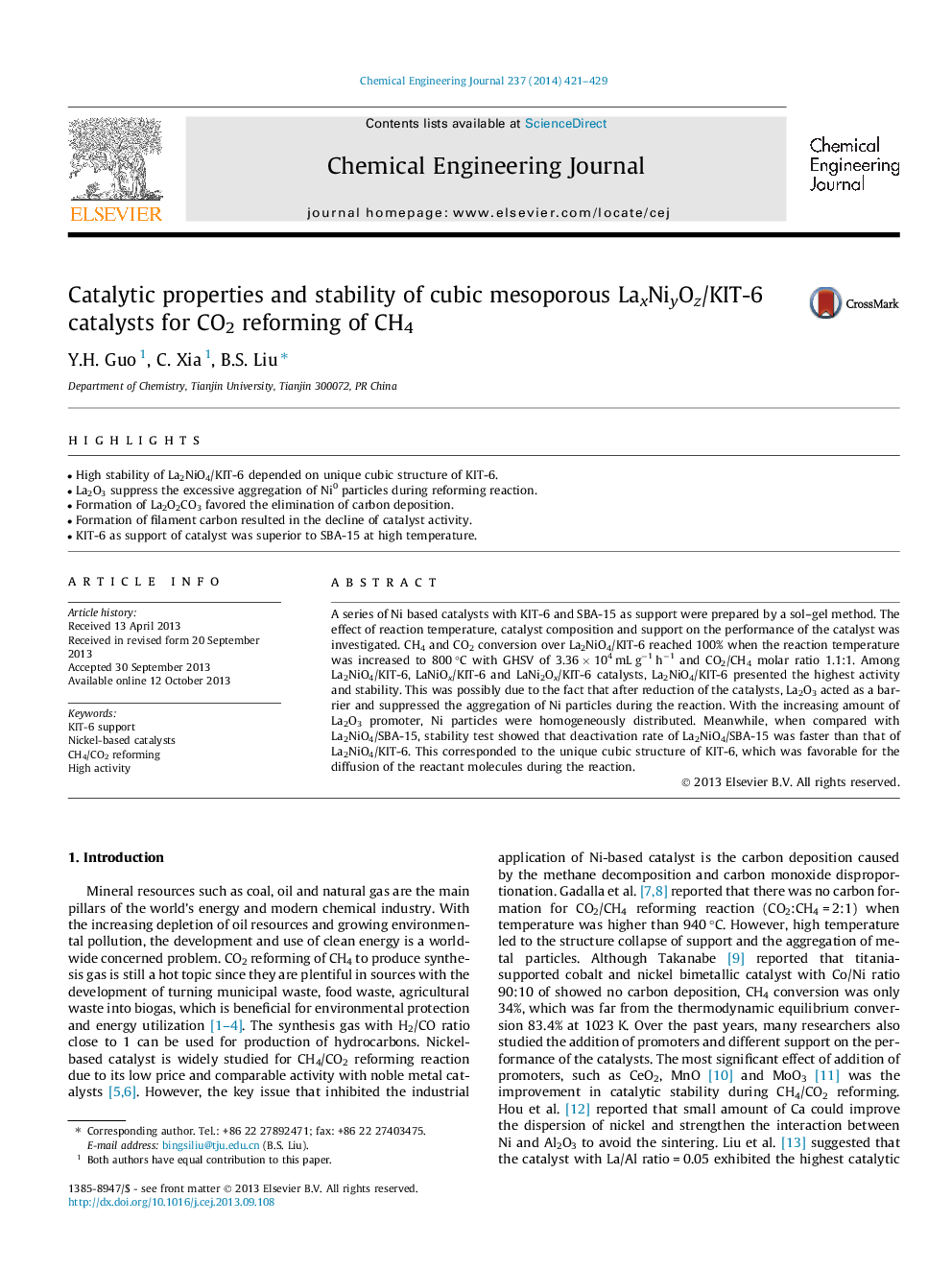| Article ID | Journal | Published Year | Pages | File Type |
|---|---|---|---|---|
| 148235 | Chemical Engineering Journal | 2014 | 9 Pages |
•High stability of La2NiO4/KIT-6 depended on unique cubic structure of KIT-6.•La2O3 suppress the excessive aggregation of Ni0 particles during reforming reaction.•Formation of La2O2CO3 favored the elimination of carbon deposition.•Formation of filament carbon resulted in the decline of catalyst activity.•KIT-6 as support of catalyst was superior to SBA-15 at high temperature.
A series of Ni based catalysts with KIT-6 and SBA-15 as support were prepared by a sol–gel method. The effect of reaction temperature, catalyst composition and support on the performance of the catalyst was investigated. CH4 and CO2 conversion over La2NiO4/KIT-6 reached 100% when the reaction temperature was increased to 800 °C with GHSV of 3.36 × 104 mL g−1 h−1 and CO2/CH4 molar ratio 1.1:1. Among La2NiO4/KIT-6, LaNiOx/KIT-6 and LaNi2Ox/KIT-6 catalysts, La2NiO4/KIT-6 presented the highest activity and stability. This was possibly due to the fact that after reduction of the catalysts, La2O3 acted as a barrier and suppressed the aggregation of Ni particles during the reaction. With the increasing amount of La2O3 promoter, Ni particles were homogeneously distributed. Meanwhile, when compared with La2NiO4/SBA-15, stability test showed that deactivation rate of La2NiO4/SBA-15 was faster than that of La2NiO4/KIT-6. This corresponded to the unique cubic structure of KIT-6, which was favorable for the diffusion of the reactant molecules during the reaction.
